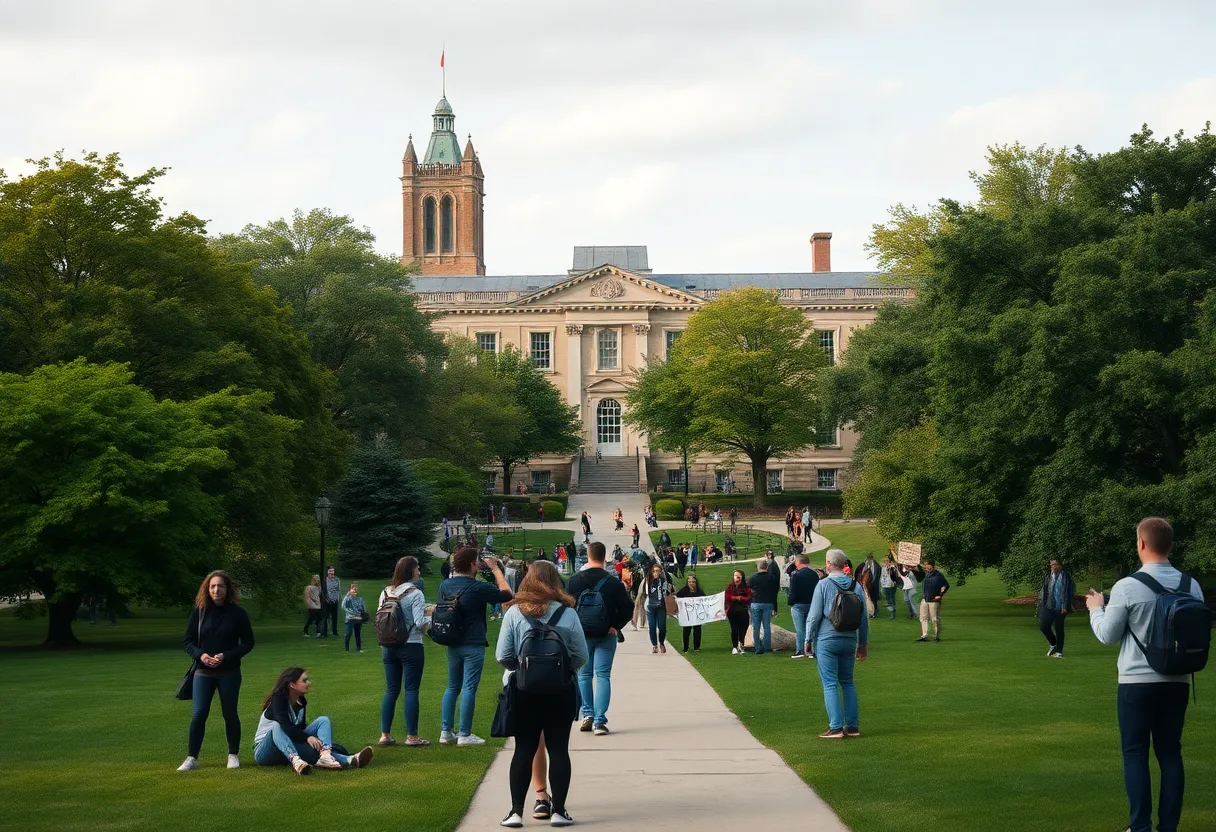News Summary
The state of New York has approved a historic allocation of $37.6 billion for education funding for the fiscal year 2026. This funding aims to address disparities in student performance amid concerns regarding the effectiveness of current funding strategies. Discussions on reforming outdated formulas are underway, focusing on the needs of students, particularly in struggling districts. Lawmakers are urging a reevaluation of the impact of this funding, which aims to enhance educational outcomes across the state.
Albany
The state of New York has approved a historic allocation of $37.6 billion for education funding for the fiscal year 2026, marking a notable increase aimed at addressing ongoing disparities in student performance. This budget underscores the persistent focus on educational finance, initiating further discussions regarding reforms to improve student outcomes across the state.
This increase in school aid comes amid growing concern from lawmakers and education advocates about the efficacy of current funding strategies. Despite a substantial investment, data reveals that student performance in key areas such as Grade 4 and Grade 8 reading and math continues to lag behind national averages, as indicated by the National Assessment of Educational Progress (NAEP).
The Rockefeller Institute is currently studying the existing Foundation Aid formula with an eye toward reforming outdated funding methods that fail to account for the evolving needs of students. Proposed changes to this formula reflect new poverty metrics and consider variables important for diverse educational needs, including the challenges faced by English Language Learners and vocational programs.
Previous tensions surrounding education funding in New York included debates over a provision known as Save Harmless, proposed by Governor Kathy Hochul in 2024. Critics, including the Empire Center for Public Policy, argue that New York’s educational funding, though substantial, does not necessarily translate into improved student performance, prompting further analysis through their K-12 SOS initiative.
Leadership from the Empire Center has highlighted an urgent need to prioritize academic outcomes, suggesting that the current distribution of educational funds fails to address the profound needs of students in struggling districts. The Citizens Budget Commission echoed these concerns, raising questions regarding the effectiveness of the educational funding framework in delivering tangible improvements.
Dr. Rick Timbs, an education finance expert, emphasized the complexity of comparing school performance data across different districts, particularly urban areas with unique challenges. He underscored the necessity of contextual understanding when evaluating educational outcomes and funding effectiveness.
Additionally, Governor Hochul introduced a controversial ban on cellphone use in schools and proposed changes to educational guidelines affecting religious and nonpublic schools, such as yeshivas. These changes have sparked debates about educational policy direction amid the overarching funding discussions.
Lawmakers have emphasized that while this year’s budget may not be perfect, it nevertheless provides adequate support for educational programs across the state. The New York State Division of the Budget has articulated that ongoing efforts are in place to refine funding allocations based on regional costs and other relevant metrics to enhance overall educational quality.
Despite these advancements, the education department’s spokesperson countered critiques stemming from the K-12 SOS study, arguing that some of its findings misinterpret data to draw overarching conclusions about educational performance in New York. Critics, including those associated with the Empire Center, believe that the state’s Department of Education is yet to fully address the pressing need for reform in the current educational system.
As the state’s education funding strategies evolve, the focus remains not only on the amount allocated but on the impact that financial investments have on enhancing educational outcomes for all students. Stakeholders are watching closely, as the measures taken in the coming years could significantly alter the landscape of New York’s education system.
Deeper Dive: News & Info About This Topic
HERE Resources
New York City Public Schools Celebrate Summer Break
New York Launches Caring Gene Program for Healthcare Students
New York City Schools Struggle Amid Extreme Heatwave
Educational Reform Leads By Socialism in NYC
New Legislation Proposed for CPA Licensure in New York
Binghamton City Council Delays Vote on Cannabis Enforcement Law
Proposed Medicaid Cuts Threaten Small Businesses in New York
New York City Proposes Municipally Owned Grocery Stores
New York Casino License Applications Deadline Approaches
New York City Real Estate Market Sees Notable Activity
Additional Resources
- Spectrum Local News: What’s Next for Education Funding
- New York Times: Donors and Universities Funding Gaps
- Politico: Kathy Hochul Budget School Funding Update
- NY Focus: New York School Funding Budget
- Spectrum Local News: Morning Briefing in Central New York – June 27
- Wikipedia: Education in New York (state)
- Google Search: New York education funding
- Google Scholar: New York education funding
- Encyclopedia Britannica: Education in the United States
- Google News: New York school funding
Author: STAFF HERE NEW YORK WRITER
The NEW YORK STAFF WRITER represents the experienced team at HERENewYork.com, your go-to source for actionable local news and information in New York, the five boroughs, and beyond. Specializing in "news you can use," we cover essential topics like product reviews for personal and business needs, local business directories, politics, real estate trends, neighborhood insights, and state news affecting the area—with deep expertise drawn from years of dedicated reporting and strong community input, including local press releases and business updates. We deliver top reporting on high-value events such as New York Fashion Week, Macy's Thanksgiving Day Parade, and Tribeca Film Festival. Our coverage extends to key organizations like the Greater New York Chamber of Commerce and United Way of New York, plus leading businesses in finance and media that power the local economy such as JPMorgan Chase, Goldman Sachs, and Bloomberg. As part of the broader HERE network, including HEREBuffalo.com, we provide comprehensive, credible insights into New York's dynamic landscape.





